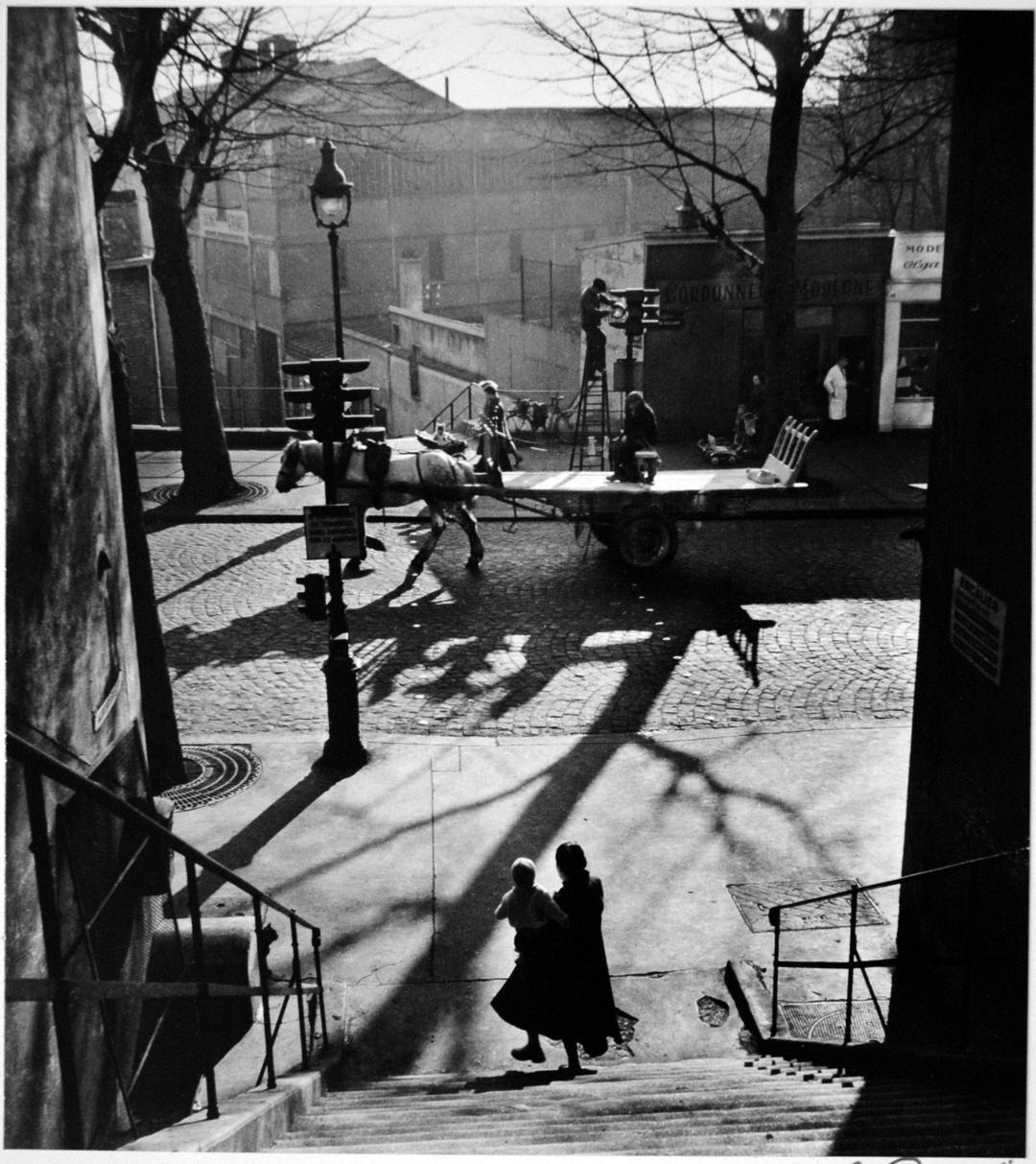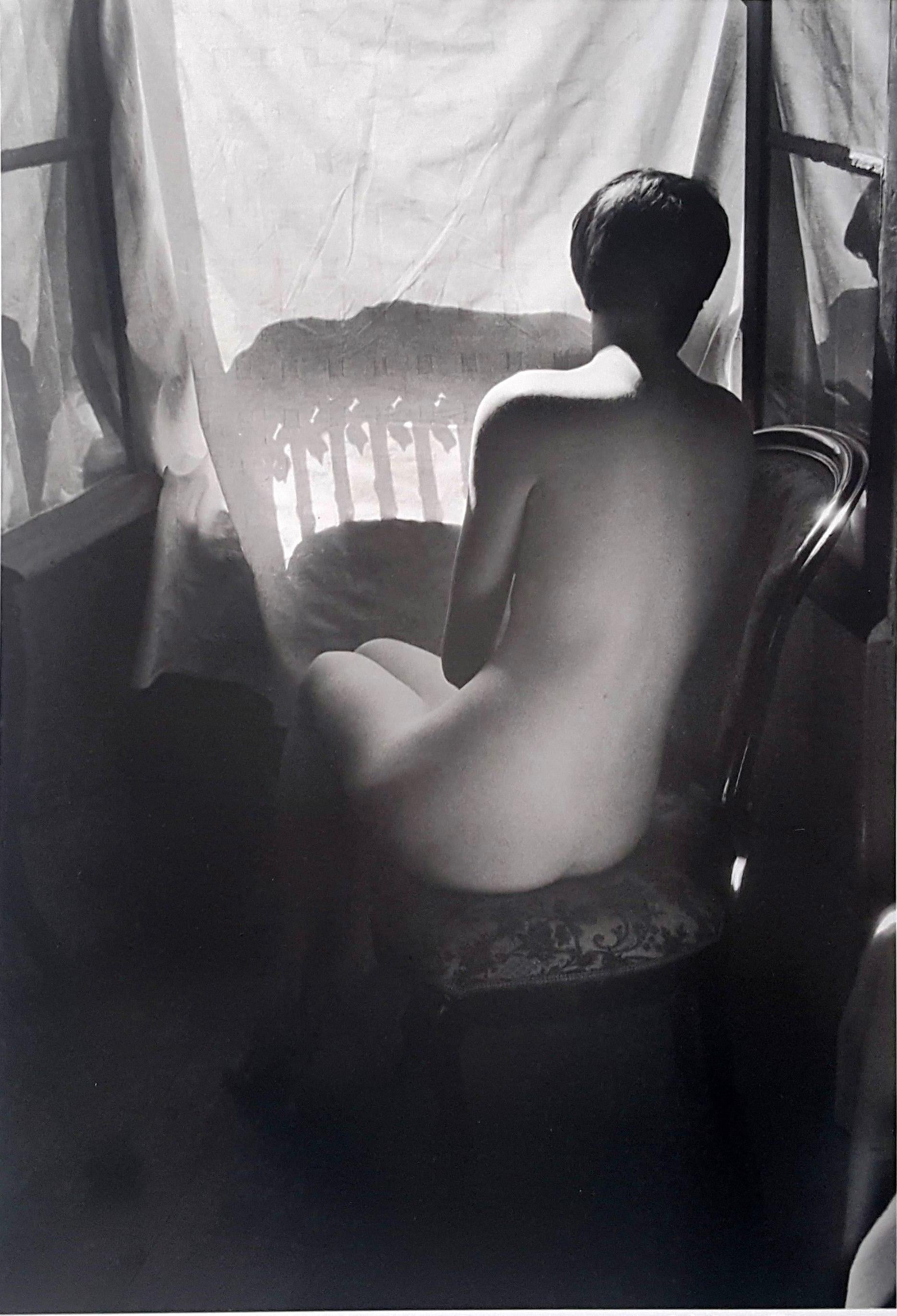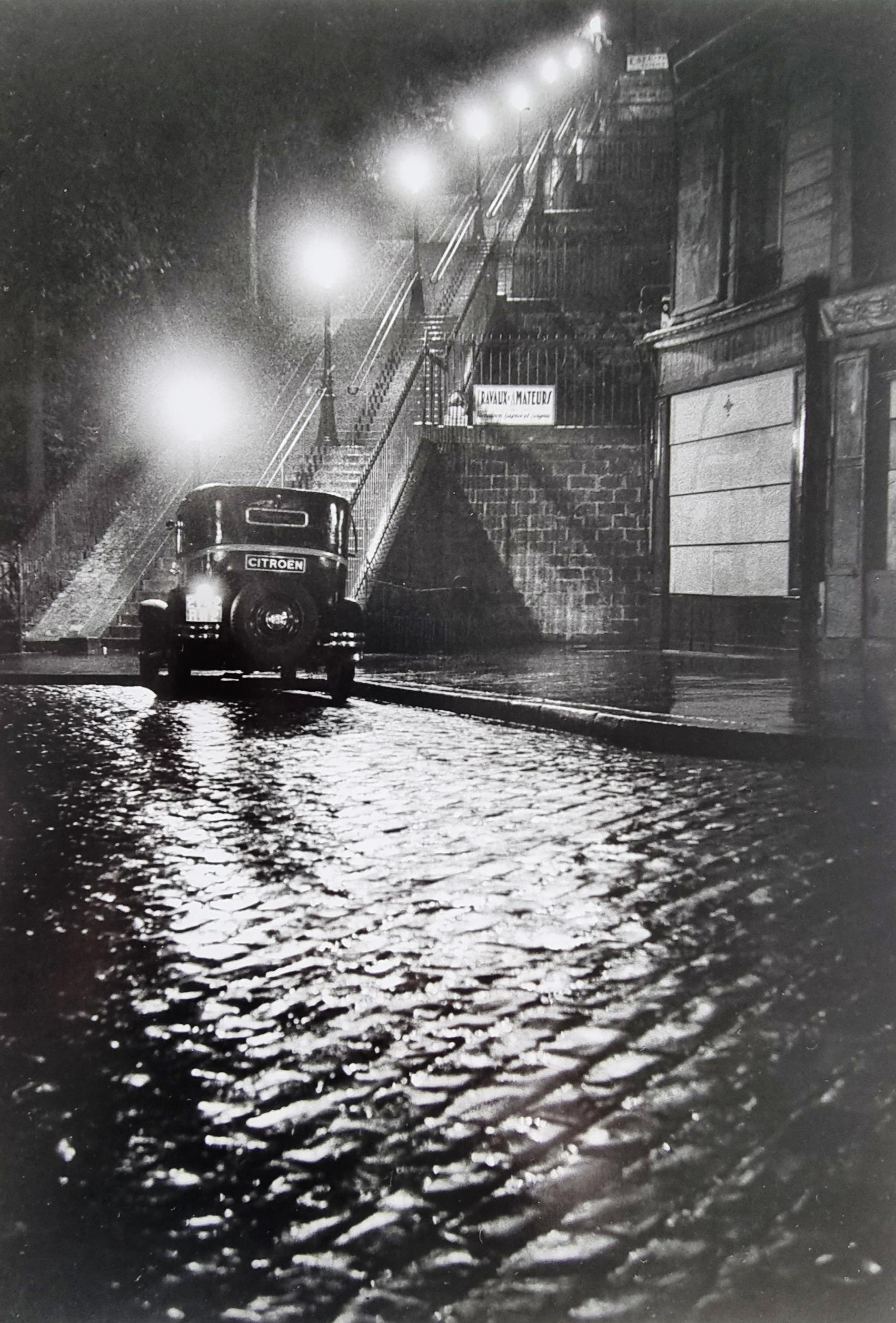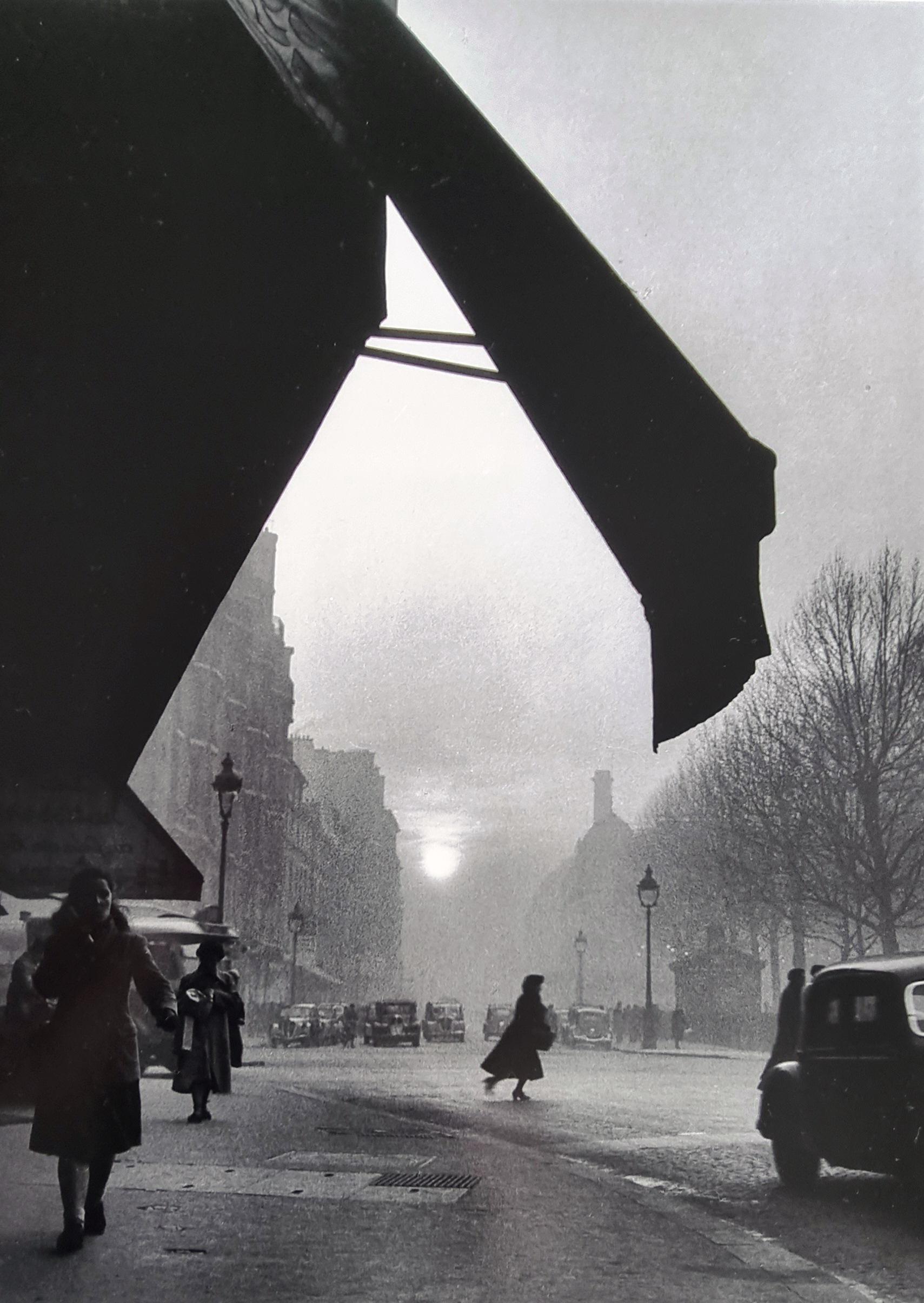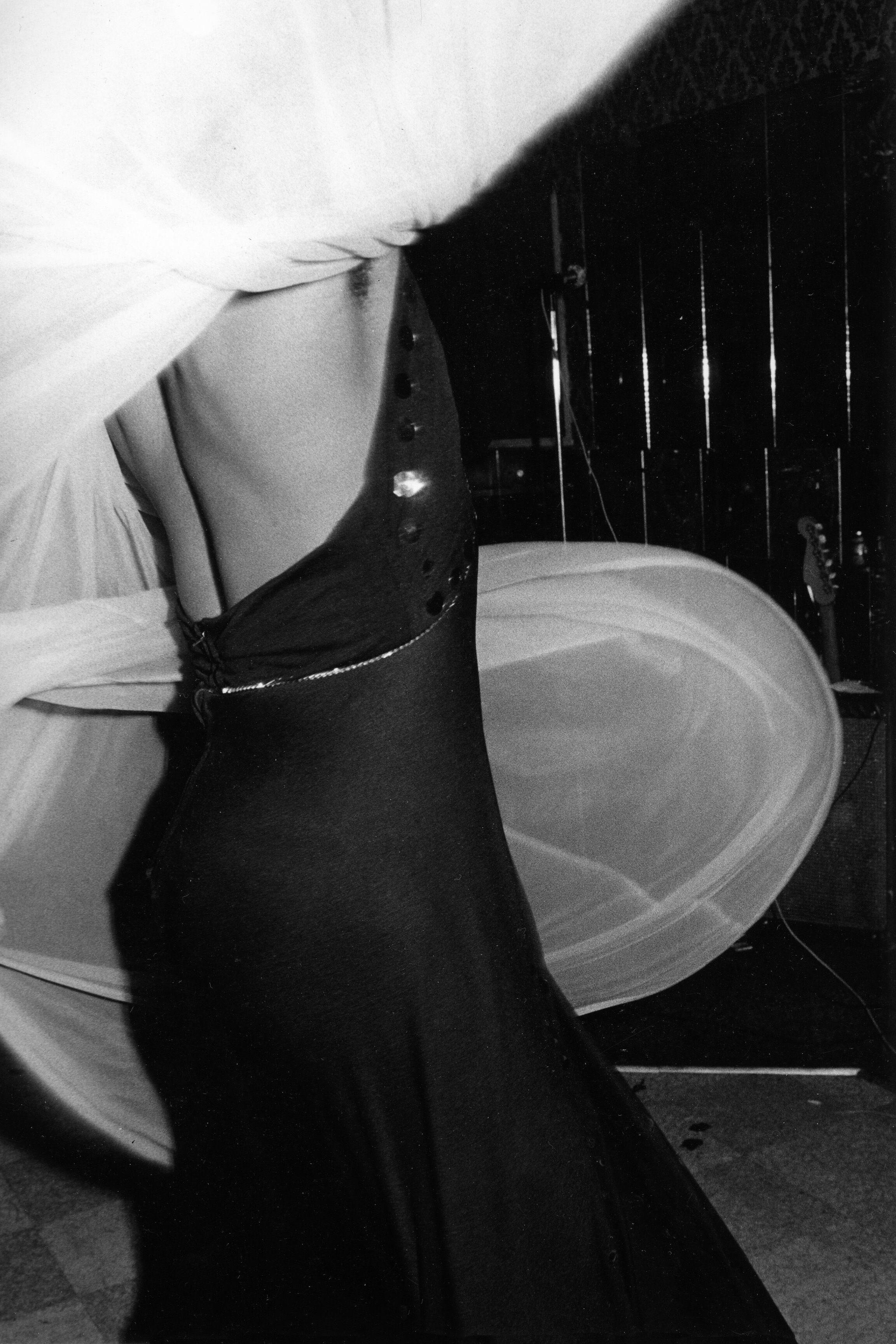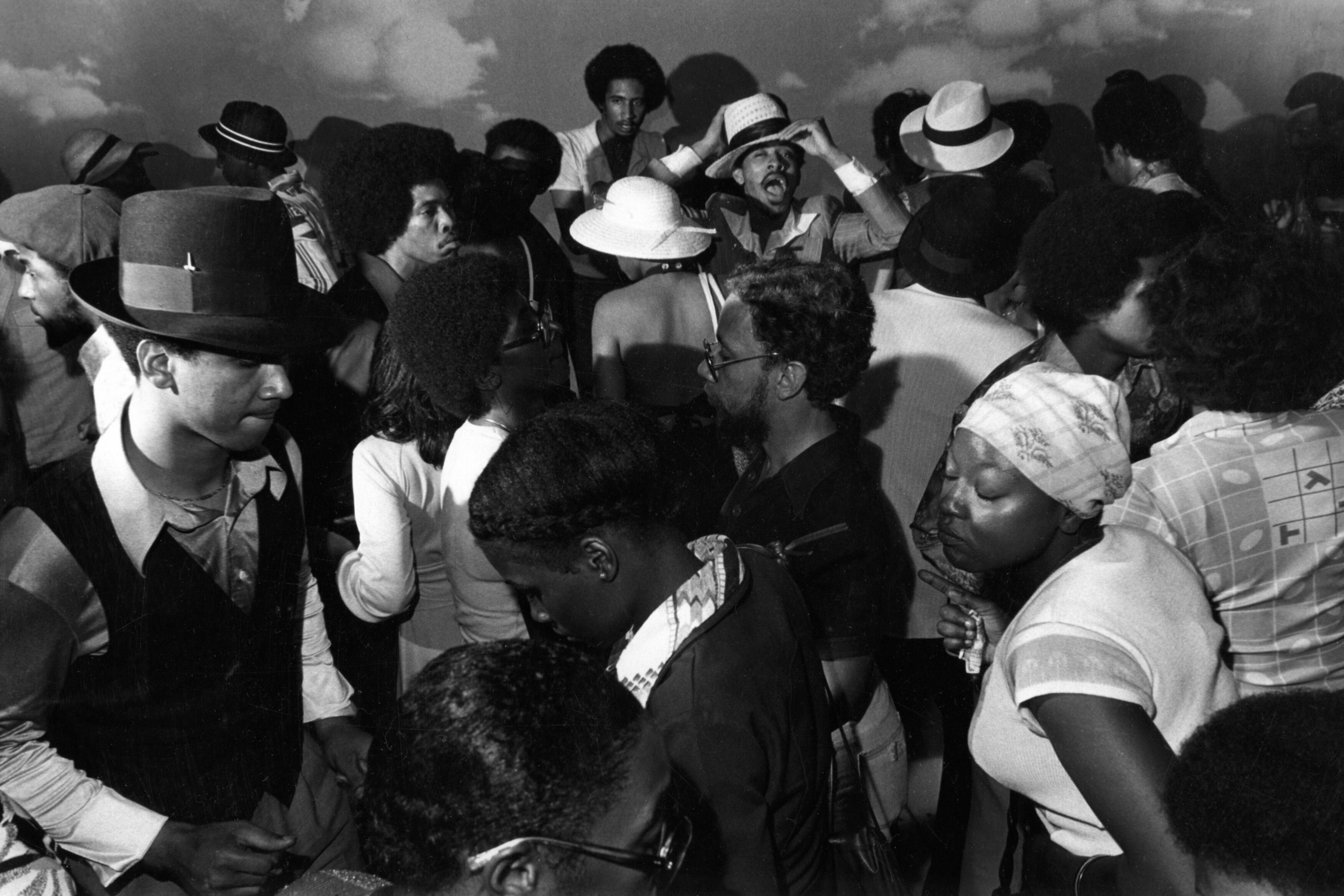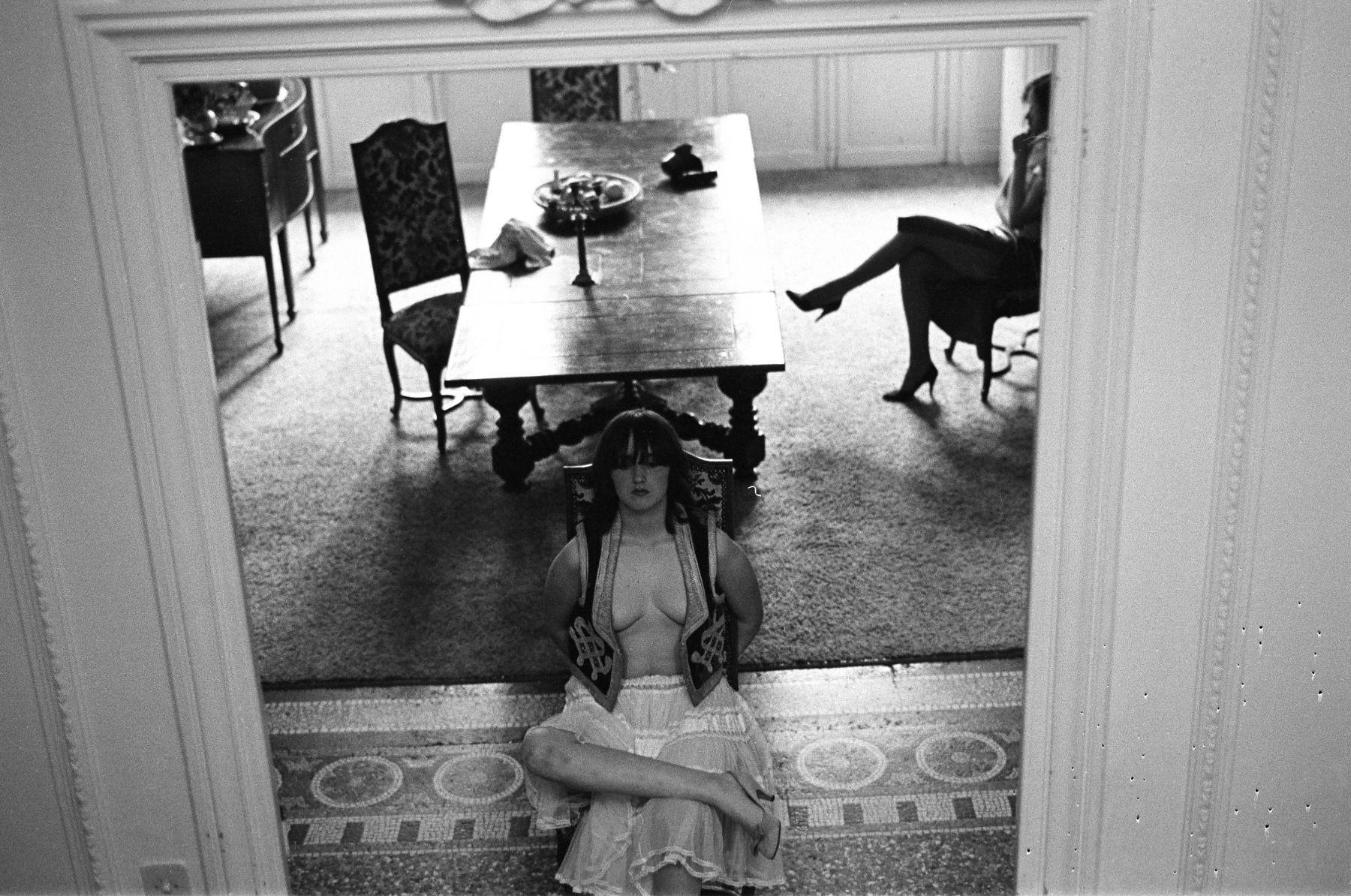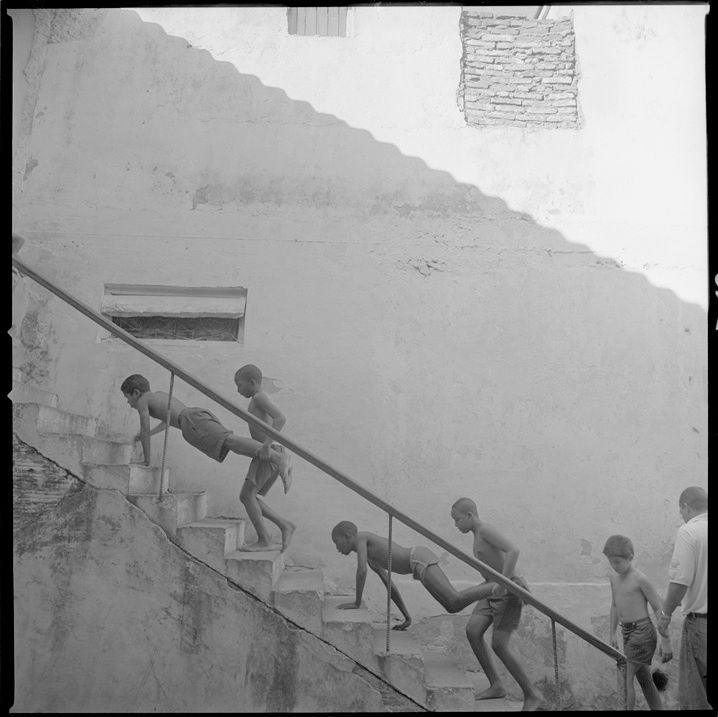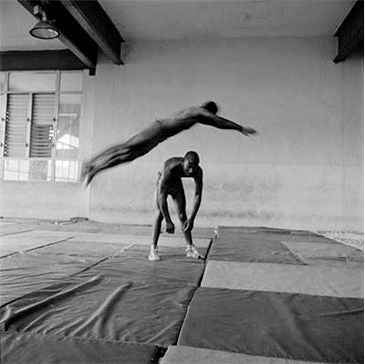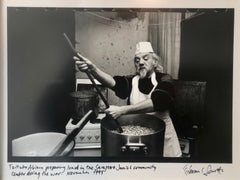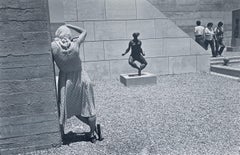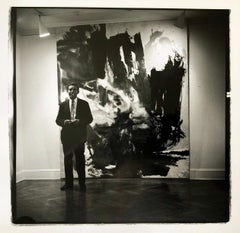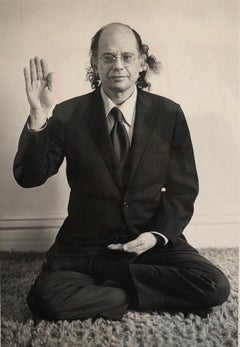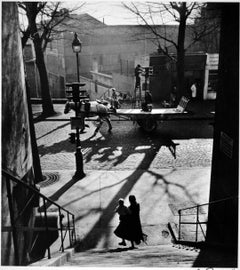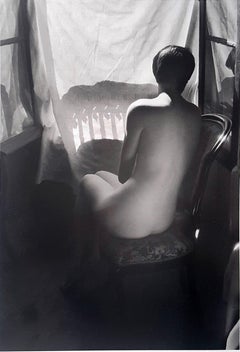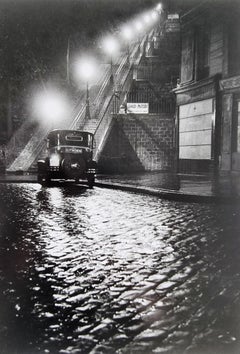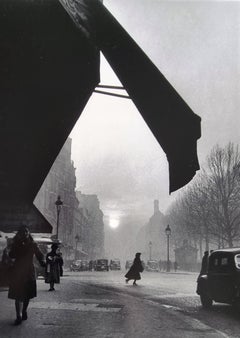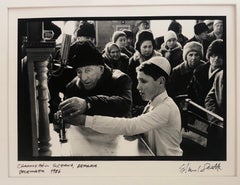
Photo Hanukkah Menorah Lighting Vintage Silver Gelatin Photograph
View Similar Items
Want more images or videos?
Request additional images or videos from the seller
1 of 11
Edward SerottaPhoto Hanukkah Menorah Lighting Vintage Silver Gelatin Photographc.1990s
c.1990s
Price:$1,200
About the Item
- Creator:
- Creation Year:c.1990s
- Dimensions:Height: 18 in (45.72 cm)Width: 22 in (55.88 cm)
- Medium:
- Movement & Style:
- Period:
- Condition:Good. Size includes frame. frame has wear.
- Gallery Location:Surfside, FL
- Reference Number:1stDibs: LU3824116202
About the Seller
4.9
Platinum Seller
Premium sellers with a 4.7+ rating and 24-hour response times
Established in 1995
1stDibs seller since 2014
1,791 sales on 1stDibs
Authenticity Guarantee
In the unlikely event there’s an issue with an item’s authenticity, contact us within 1 year for a full refund. DetailsMoney-Back Guarantee
If your item is not as described, is damaged in transit, or does not arrive, contact us within 7 days for a full refund. Details24-Hour Cancellation
You have a 24-hour grace period in which to reconsider your purchase, with no questions asked.Vetted Professional Sellers
Our world-class sellers must adhere to strict standards for service and quality, maintaining the integrity of our listings.Price-Match Guarantee
If you find that a seller listed the same item for a lower price elsewhere, we’ll match it.Trusted Global Delivery
Our best-in-class carrier network provides specialized shipping options worldwide, including custom delivery.More From This Seller
View AllPhoto Tzitzko Abinun Jewish Cooking Budapest Vintage Silver Gelatin Photograph
By Edward Serotta
Located in Surfside, FL
Edward Serotta
Tzitzko Abinun (Man cooking) . Judaica.
silver gelatin print, matted, captioned by hand and hand signed and numbered. B/W photographs documenting Jewish life in Ea...
Category
1990s Contemporary Black and White Photography
Materials
Silver Gelatin
Vintage Silver Gelatin Print Photo Israel Museum Sculpture Jerusalem Photograph
Located in Surfside, FL
Susan Hacker -Israel Museum, Sculpture Garden, Jerusalem, Israel, 1979
Silver Gelatin black/white photograph, printed in 1983, hand signed, titled (Jeru...
Category
1970s American Modern Black and White Photography
Materials
Photographic Paper, Silver Gelatin
Vintage Print Silver Gelatin Signed Photograph Friedl Dzubas New York Artist
By Fred McDarrah
Located in Surfside, FL
This is a photo of Friedl Dzubas (Abstract Expressionist) at Castelli Gallery, signed in ink and with photographer stamp verso and hand written title..
Over a 50-year span, McDarra...
Category
1950s American Modern Black and White Photography
Materials
Black and White, Silver Gelatin
Original Vintage Silver Gelatin Photograph of Poet Allen Ginsberg in Yoga Pose
By Jan Herman
Located in Surfside, FL
Jan Herman, journalist, writer and photographer is an old-school journalist who got his start in San Francisco’s counterculture scene in the 1960s. A Brooklyn native and Queens College graduate.
While working at City Lights Books as the poet-publisher Lawrence Ferlinghetti's assistant, Jan Herman founded Nova Broadcast Press and the little magazine San Francisco Earthquake (1967-1971), which published Beat, post-Beat and Fluxus writers and artists. Chief among them were William S. Burroughs, Brion Gysin, Allen Ginsberg, Carl Weissner, Wolf Vostell, Norman O. Mustill, Mary Beach, Claude Pélieu, Ferlinghetti, Ed Sanders...
Category
1980s American Modern Figurative Photography
Materials
Silver Gelatin
Vintage Silver Gelatin Photograph Guggenheim Museum Architecture Photo Alloway
By Fred W. McDarrah
Located in Surfside, FL
Lawrence Alloway Museum Director Jan 28 1964
Photographer - Fred McDarrah
Over a 50-year span, McDarrah documented the rise of the Beat Generation, the city’s postmodern art movement, its off-off-Broadway actors, troubadours, politicians, agitators and social protests.
Fred captured Jack Kerouac frolicking with women at a New Year’s bash in 1958, Andy Warhol adjusting a movie-camera lens in his silver-covered factory, and Bob Dylan offering a salute of recognition outside Sheridan Square near the Voice’s old office.
Not just a social chronicler, McDarrah was a great photo-journalist.
For years, McDarrah was the Voice's only photographer and, for decades, he ran the Voice’s photo department, where he helped train dozens of young photographers, including James Hamilton, Sylvia Plachy, Robin Holland and Marc Asnin. His mailbox was simply marked "McPhoto."
An exhibit of McDarrah’s photos of artists presented by the Steven Kasher Gallery in Chelsea was hailed by The New York Times as “a visual encyclopedia of the era’s cultural scene.”
artists in their studios, (Alice Neel, Philip Guston, Stuart Davis, Robert Smithson, Jasper Johns, Franz Kline), actors (Dustin Hoffman, Robert De Niro on the set of “Taxi Driver”), musicians (Janis Joplin, Alice Cooper, Bob Dylan) and documentary images of early happenings and performances (Yayoi Kusama, Charlotte Moorman, Al Hansen, Jim Dine, Nam June Paik). The many images of Andy Warhol include the well-known one with his Brillo boxes at the Stable Gallery in 1964. Woody Allen, Diane Arbus, W. H. Auden, Francis Bacon, Joan Baez, Louise Bourgeois, David Bowie, Jimmy Breslin, William Burroughs, John Cage, Leo Castelli, Christo, Leonard Cohen, Merce Cunningham, William de Kooning, Jim Dine, Mark di Suvero, Marcel Duchamp, Bob Dylan, Federico Fellini, Allen Ginsberg, Robert Indiana, Mick Jagger, Jasper Johns, Kusama, John Lennon, Sol Lewitt, Roy Lichtenstein, Nam June Paik, Elvis Presley, Claes Oldenburg, Yoko Ono, Robert Rauschenberg, Lou Reed, James Rosenquist, Mark Rothko, Ed Ruscha, Robert Smithson, Susan Sontag, Andy Warhol, and others.
McDarrah’s prints have been collected in depth by the J. Paul Getty Museum and the National Portrait Gallery, Washington. His work is in numerous public and private collections.
Lawrence Reginald Alloway was an English art critic and curator who worked in the United States from 1961. In the 1950s, he was a leading member of the Independent Group in the UK and in the 1960s was an influential writer and curator in the US. He first used the term "mass popular art" in the mid-1950s and used the term "Pop Art" in the 1960s to indicate that art has a basis in the popular culture of its day and takes from it a faith in the power of images.
Alloway started writing reviews for the British periodical ArtReview, then styled Art News and Review in 1949 and for the American periodical Art News in 1953. In Nine Abstract Artists (1954) he promoted the Constructivist artists that emerged in Britain after the Second World War: Robert Adams, Terry Frost, Adrian Heath, Anthony Hill, Roger Hilton, Kenneth Martin, Mary Martin, Victor Pasmore, and William Scott.
In 1961, through his contacts with the American painter Barnett Newman, Alloway was offered a lecturer position at Bennington College in Vermont. He and his wife, the realist painter Sylvia Sleigh...
Category
1960s American Modern Black and White Photography
Materials
Silver Gelatin
Vintage Silver Gelatin Signed Photograph Edward Steichen, MoMA Photo
By Fred McDarrah
Located in Surfside, FL
Edward Steichen, John Durniak, Monroe Wheeler and Edward D. Museum of modern art on Feb 10, 1962
Photographer Fred McDarrah
Over a 50-year span, McDarrah documented the rise of the Beat Generation, the city’s postmodern art movement, its off-off-Broadway actors, troubadours, politicians, agitators and social protests.
Fred captured Jack Kerouac frolicking with women at a New Year’s bash in 1958, Andy Warhol adjusting a movie-camera lens in his silver-covered factory, and Bob Dylan offering a salute of recognition outside Sheridan Square near the Voice’s old office.
Not just a social chronicler, McDarrah was a great photo-journalist.
For years, McDarrah was the Voice's only photographer and, for decades, he ran the Voice’s photo department, where he helped train dozens of young photographers, including James Hamilton, Sylvia Plachy, Robin Holland and Marc Asnin. His mailbox was simply marked "McPhoto."
An exhibit of McDarrah’s photos of artists presented by the Steven Kasher Gallery in Chelsea was hailed by The New York Times as “a visual encyclopedia of the era’s cultural scene.”
artists in their studios, (Alice Neel, Philip Guston, Stuart Davis, Robert Smithson, Jasper Johns, Franz Kline), actors (Dustin Hoffman, Robert De Niro on the set of “Taxi Driver”), musicians (Janis Joplin, Alice Cooper, Bob Dylan) and documentary images of early happenings and performances (Yayoi Kusama, Charlotte Moorman, Al Hansen, Jim Dine, Nam June Paik). The many images of Andy Warhol include the well-known one with his Brillo boxes at the Stable Gallery in 1964. Woody Allen, Diane Arbus, W. H. Auden, Francis Bacon, Joan Baez, Louise Bourgeois, David Bowie, Jimmy Breslin, William Burroughs, John Cage, Leo Castelli, Christo, Leonard Cohen, Merce Cunningham, William de Kooning, Jim Dine, Mark di Suvero, Marcel Duchamp, Bob Dylan, Federico Fellini, Allen Ginsberg, Robert Indiana, Mick Jagger, Jasper Johns, Kusama, John Lennon, Sol Lewitt, Roy Lichtenstein, Nam June Paik, Elvis Presley, Claes Oldenburg, Yoko Ono, Robert Rauschenberg, Lou Reed, James Rosenquist, Mark Rothko, Ed Ruscha, Robert Smithson, Susan Sontag, Andy Warhol, and others. McDarrah’s prints have been collected in depth by the J. Paul Getty Museum and the National Portrait Gallery, Washington. His work is in numerous public and private collections.
Edward Jean Steichen (March 27, 1879 – March 25, 1973) was a Luxembourgish American photographer, painter, and art gallery and museum curator. Steichen's were the photographs that most frequently appeared in Alfred Stieglitz's groundbreaking magazine Camera Work during its publication from 1903 to 1917. Together Stieglitz and Steichen opened the Little Galleries of the Photo-Secession, which eventually became known as '291', after its address.
Steichen laid claim to his photos of gowns for the magazine Art et Décoration in 1911 being the first modern fashion photographs ever published. From 1923 to 1938, Steichen was a photographer for the Condé Nast magazines Vogue and Vanity Fair while also working for many advertising agencies including J. Walter Thompson. During these years, Steichen was regarded as the best known and highest paid photographer in the world. In 1944, he directed the war documentary The Fighting Lady, which won the 1945 Academy Award for Best Documentary.
From 1947 to 1961, Steichen served as Director of the Department of Photography at New York's Museum of Modern Art. While at MoMA, he curated and assembled exhibits including The Family of Man, which was seen by nine million people. In 1904, Steichen began experimenting with color photography. He was one of the earliest in the United States to use the Autochrome Lumière process. In 1905, Stieglitz and Steichen created the Little Galleries of the Photo-Secession, which eventually became known as 291 after its address. It presented some of the first American exhibitions of Henri Matisse, Auguste Rodin, Paul Cézanne, Pablo Picasso, and Constantin Brâncuși.
He worked with Robert Frank even before his The Americans was published, exhibited the early work of Harry Callahan and Aaron Siskind, and purchased two Rauschenberg prints...
Category
1960s American Modern Black and White Photography
Materials
Silver Gelatin
You May Also Like
Avenue Simon Bolivar - Willy Ronis, 20th Century, French Humanist Photography
By Willy Ronis
Located in Paris, FR
One of the famous members of the Humanist photography in France.
Signed lower right by the artist.
Stamp of the artist's studio on the back.
Category
1950s Contemporary Black and White Photography
Materials
Photographic Paper, Silver Gelatin
Deena's back - Willy Ronis, 20th Century, French Humanist Photography
By Willy Ronis
Located in Paris, FR
One of the most famous members of the Humanist photography in France.
Signed lower right by the artist.
Stamp of the artist's studio on the back.
Category
1950s Contemporary Black and White Photography
Materials
Photographic Paper, Silver Gelatin
Rue Muller Willy Ronis Twentieth Century Humanist photography Paris black white
By Willy Ronis
Located in Paris, FR
One of the most famous members of the Humanist photography in France.
Signed lower right by the artist.
Stamp of the artist's studio on the back.
Category
1930s Contemporary Black and White Photography
Materials
Photographic Paper, Silver Gelatin
Carrefour Sèvres-Babylone Willy Ronis Twentieth Century Humanist photography art
By Willy Ronis
Located in Paris, FR
One of the most famous members of the Humanist photography in France.
Signed lower right by the artist.
Stamp of the artist's studio on the back.
Category
1940s Contemporary Black and White Photography
Materials
Photographic Paper, Silver Gelatin
#114, 1970s Nightclubs of Chicago South Side - Rare Vintage Silver Gelatin Print
Located in London, GB
"Abramson comes much closer to recording the sound of these clubs than we would have any right to expect from a photographer." - Nick Hornby (London, 2009), Light On the South Side, ...
Category
1970s Contemporary Black and White Photography
Materials
Photographic Film, Archival Paper, Photographic Paper, Silver Gelatin
#19, 1970s Nightclubs of Chicago South Side - Rare Vintage Silver Gelatin Print
Located in London, GB
A camera is a window through which a photographer interacts with the world, and it's up to the operator to decide whether his camera will be a barrier or a mirror between he and his subjects. In the 1970s, Michael Abramson chose the latter path when he brought his camera to Pepper's Hideout on Chicago's South Side. Following in the footsteps of his acknowledged influence Gyula Halász, a Hungarian photographer better known as Brassaï who became the pre-eminent chronicler of the Paris nightlife he loved so much, Abramson initiated himself into the nightlife of Chicago's predominantly black neighbourhoods. He was very much a part of the scene he documented on film, drinking, laughing, and dancing with his subjects into small hours and becoming as much a part of the atmosphere as the locals who frequented the same nightspots he did. - Joe Tangari (Numero Group, 2009)
This series won Abramson a grant from the National Endowment for the Arts in 1978 and launched his career as a photojournalist. Eventually the project resulted in a hardbound book, Light: On the South Side, including the Grammy and Mojo nominated album, featuring Chicago blues...
Category
1970s Contemporary Black and White Photography
Materials
Photographic Film, Archival Paper, Photographic Paper, Silver Gelatin
